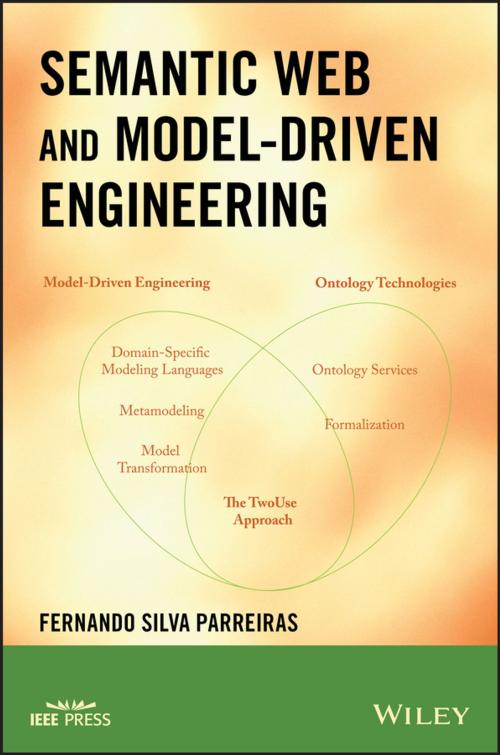Semantic Web and Model-Driven Engineering
Nonfiction, Computers, Advanced Computing, Engineering, Computer Engineering| Author: | Fernando S. Parreiras | ISBN: | 9781118135051 |
| Publisher: | Wiley | Publication: | May 9, 2012 |
| Imprint: | Wiley-IEEE Press | Language: | English |
| Author: | Fernando S. Parreiras |
| ISBN: | 9781118135051 |
| Publisher: | Wiley |
| Publication: | May 9, 2012 |
| Imprint: | Wiley-IEEE Press |
| Language: | English |
The next enterprise computing era will rely on the synergy between both technologies: semantic web and model-driven software development (MDSD). The semantic web organizes system knowledge in conceptual domains according to its meaning. It addresses various enterprise computing needs by identifying, abstracting and rationalizing commonalities, and checking for inconsistencies across system specifications. On the other side, model-driven software development is closing the gap among business requirements, designs and executables by using domain-specific languages with custom-built syntax and semantics. It focuses on using modeling languages as programming languages.
Among many areas of application, we highlight the area of configuration management. Consider the example of a telecommunication company, where managing the multiple configurations of network devices (routers, hubs, modems, etc.) is crucial. Enterprise systems identify and document the functional and physical characteristics of network devices, and control changes to those characteristics. Applying the integration of semantic web and model-driven software development allows for
(1) explicitly specifying configurations of network devices with tailor-made languages,
(2) for checking the consistency of these specifications
(3) for defining a vocabulary to share device specifications across enterprise systems. By managing configurations with consistent and explicit concepts, we reduce cost and risk, and enhance agility in response to new requirements in the telecommunication area.
This book examines the synergy between semantic web and model-driven software development. It brings together advances from disciplines like ontologies, description logics, domain-specific modeling, model transformation and ontology engineering to take enterprise computing to the next level.
The next enterprise computing era will rely on the synergy between both technologies: semantic web and model-driven software development (MDSD). The semantic web organizes system knowledge in conceptual domains according to its meaning. It addresses various enterprise computing needs by identifying, abstracting and rationalizing commonalities, and checking for inconsistencies across system specifications. On the other side, model-driven software development is closing the gap among business requirements, designs and executables by using domain-specific languages with custom-built syntax and semantics. It focuses on using modeling languages as programming languages.
Among many areas of application, we highlight the area of configuration management. Consider the example of a telecommunication company, where managing the multiple configurations of network devices (routers, hubs, modems, etc.) is crucial. Enterprise systems identify and document the functional and physical characteristics of network devices, and control changes to those characteristics. Applying the integration of semantic web and model-driven software development allows for
(1) explicitly specifying configurations of network devices with tailor-made languages,
(2) for checking the consistency of these specifications
(3) for defining a vocabulary to share device specifications across enterprise systems. By managing configurations with consistent and explicit concepts, we reduce cost and risk, and enhance agility in response to new requirements in the telecommunication area.
This book examines the synergy between semantic web and model-driven software development. It brings together advances from disciplines like ontologies, description logics, domain-specific modeling, model transformation and ontology engineering to take enterprise computing to the next level.















